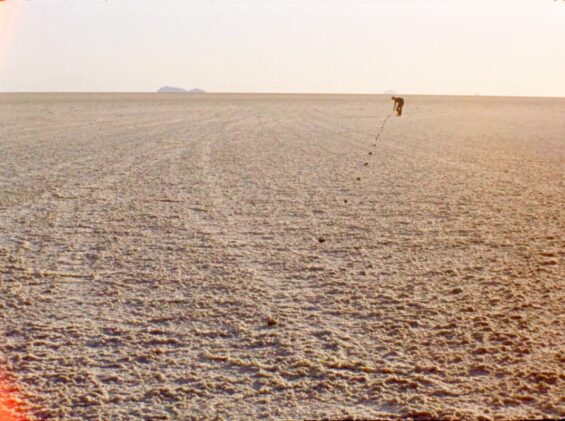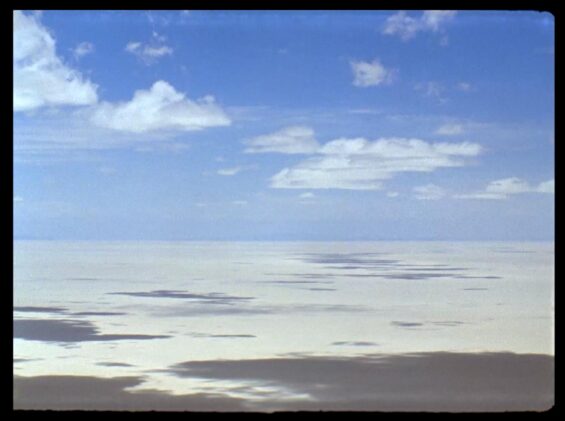Of Seeing in Salt. Or: Ten Strategies to face the own finitude in an infinity
Del ver sobre sal. O: Diez estratégias para enfrentar, en una infinitud, la propria finitud

A short film by Philipp Hartmann with images photographed by Helena Wittmann
(Germany/Bolivia 2024; 16mm/HD; 3 minutes)
Die größte Salzwüste der Welt – der Salar de Uyuni in Bolivien. An der Endlichkeit unserer Existenz ändert das aber auch nichts. Ein visueller Versuch in zehn Akten.
The largest salt desert in the world – the Salar de Uyuni in Bolivia. But that doesn’t change the finite nature of our existence. A visual experiment in ten acts.
The setting is the Salar de Uyuni, in Bolivia. Hartmann and his director of photography, filmmaker Helena Wittmann, had visited fourteen years ago that geography that forces us to think about the notions of space and time. In ten short scenes, the film fulfills its main task: meditating on finitude in an infinite landscape. The means to achieve this is to work on the frame and the human figure in it. Hartmann goes in front of the camera and tests different options associated with distance and the measurement of time based on displacement in space. A testimony from a local introduces the native and telluric philosophy of that place, with which one can reason one’s own existence and that of a cactus on an equal footing. In films like this, you have to know how to wait for chance; There may be surprises and you have to know how to recognize that instant of donation born of chance. Something happens. It is as absurd as it is beautiful, because two examples of the technological conquest of industrial engineering and two representatives, contingent fruits of the genetic and evolutionary combination, of the many species that inhabit our earth, whose presence in the painting are combined in a single plane It is a moment of materialistic grace. (Roger Koza)
El escenario es el Salar de Uyuni, en Bolivia. Hartmann y su directora de fotografía, la cineasta Helena Wittmann, habían visitado catorce años atrás esa geografía que obliga a pensar sobre las nociones de espacio y tiempo. En diez breves escenas, el film cumple con su principal cometido: meditar sobre la finitud en un paisaje infinito. El medio para lograrlo consiste en trabajar sobre el encuadre y la figura humana en él. Hartmann pasa delante de cámara y prueba distintas opciones asociadas a la distancia y a la medición del tiempo en función del desplazamiento en el espacio. Un testimonio de un lugareño introduce la filosofía autóctona y telúrica de ese paraje, con la que se puede razonar la existencia propia y la de un cactus en pie de igualdad. En películas así, hay que saber esperar el azar; puede haber sorpresas y hay que saber reconocer ese instante de donación nacido de lo aleatorio. Algo sucede. Es tan absurdo como hermoso, porque se combinan en un solo plano dos ejemplos de la conquista tecnológica de la ingeniería industrial y dos representantes, frutos contingentes de la combinación genética y evolutiva, de las tantas especies que habitan nuestra tierra, cuya presencia en el cuadro es un instante de gracia materialista. (Roger Koza)
SCREENINGS:
FICIC Cosquín 2024
Intl. Shortfilmfestival Hamburg 2024
Harzmovienale 10. August 2024
Open Air Filmfest Weiterstadt 17. August 2024
Dokfest Kassel 2024

